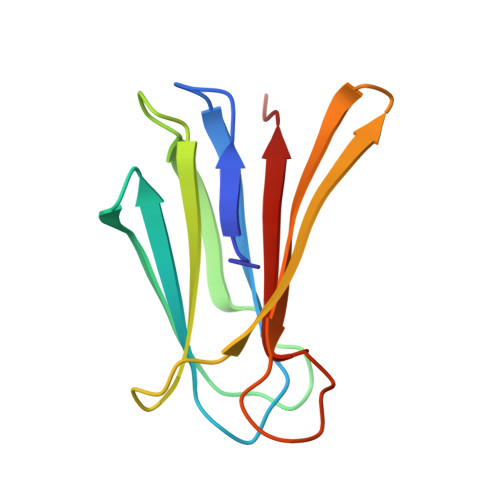The virulence factor LecB varies in clinical isolates: consequences for ligand binding and drug discovery.
Sommer, R., Wagner, S., Varrot, A., Nycholat, C.M., Khaledi, A., Haussler, S., Paulson, J.C., Imberty, A., Titz, A.(2016) Chem Sci 7: 4990-5001
- PubMed: 30155149
- DOI: https://doi.org/10.1039/c6sc00696e
- Primary Citation of Related Structures:
5A6Q, 5A6X, 5A6Y, 5A6Z - PubMed Abstract:
P. aeruginosa causes a substantial number of nosocomial infections and is the leading cause of death of cystic fibrosis patients. This Gram-negative bacterium is highly resistant against antibiotics and further protects itself by forming a biofilm. Moreover, a high genomic variability among clinical isolates complicates therapy. Its lectin LecB is a virulence factor and necessary for adhesion and biofilm formation. We analyzed the sequence of LecB variants in a library of clinical isolates and demonstrate that it can serve as a marker for strain family classification. LecB from the highly virulent model strain PA14 presents 13% sequence divergence with LecB from the well characterized PAO1 strain. These differences might result in differing ligand binding specificities and ultimately in reduced efficacy of drugs directed towards LecB. Despite several amino acid variations at the carbohydrate binding site, glycan array analysis showed a comparable binding pattern for both variants. A common high affinity ligand could be identified and after its chemoenzymatic synthesis verified in a competitive binding assay: an N -glycan presenting two blood group O epitopes (H-type 2 antigen). Molecular modeling of the complex suggests a bivalent interaction of the ligand with the LecB tetramer by bridging two separate binding sites. This binding rationalizes the strong avidity (35 nM) of LecB PA14 to this human fucosylated N-glycan. Biochemical evaluation of a panel of glycan ligands revealed that LecB PA14 demonstrated higher glycan affinity compared to LecB PAO1 including the extraordinarily potent affinity of 70 nM towards the monovalent human antigen Lewis a . The structural basis of this unusual high affinity ligand binding for lectins was rationalized by solving the protein crystal structures of LecB PA14 with several glycans.
Organizational Affiliation:
Chemical Biology of Carbohydrates , Helmholtz Institute for Pharmaceutical Research Saarland (HIPS) , D-66123 Saarbrücken , Germany . Email: alexander.titz@helmholtz-hzi.de ; http://www.helmholtz-hzi.de/cbch.




















